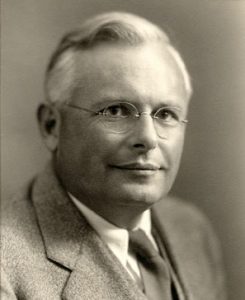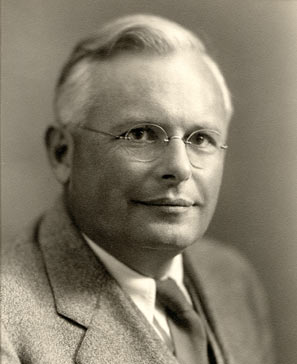(9 March 1886 – 21 February 1960)
The University of North Carolina at Chapel Hill Herbarium (NCU) has cataloged about 150 vascular specimens collected by Harley Harris Bartlett. As we continue to catalog our collections without doubt many more specimens collected by Bartlett will be found. Most of Bartlett’s specimens at NCU were collected in the southeastern United States and date from 1907-1951.
The University of Michigan houses not only Bartlett’s herbarium, but also his papers & diaries (Bentley Historical Library) and his batak texts and other anthropological items (Museum of Anthropology).
“The life of Harley H. Bartlett, which came to its conclusion February 21, 1960, was one of those few in the annals of American botany which even a book-length biography would be hopelessly inadequate to cover,” wrote Edward Voss, a botanical colleague at the University of Michigan. “The extraordinary diversity of his interests, accomplishment, travels, and collections has already given to them a legendary quality.

Bartlett received an A.B. degree in chemistry from Harvard University in 1908. As an undergraduate he worked in the herbarium at Harvard. “He might have continued for graduate work in botany at Harvard, had not formal requirements become more rigid. The prospect of having to fulfil [sic] certain prerequisites before going on in botany irritated him. (He ever maintained an impatience with strict and specific educational requirements, and he seemed to enjoy the fact that he never earned nor accepted an honorary or an advanced degree – although he took great pride in his students who had done so.)
After working for the United States Department of Agriculture, he joined the botany department of the University of Michigan in 1915 as an acting assistant professor. He became Director of the Michigan Botanical Gardens in 1919, and full professor in 1921.
In 1921 he traveled with C.D. La Rue to Sumatra for the United States Rubber Company. “[Bartlett] cultivated an intense interest in the people and language of the Batak of Asahan on the east coast of Sumatra, on which he became a leading authority. An “adopted chief” of the tribe and fluent in their language, he accumulated invaluable collections and data on both anthropological and botanical subjects. His interests in native uses of plant materials, in the native names of plants, and in the variations of both, particularly in Indonesia and the Philippines, led him into many fascinating studies in ethnobotany and linguistics. Altogether, his botanical and agricultural field work and research took him to Sumatra, Formosa, Mexico, Guatemala and British Honduras, the Philippines, Panama, Haiti, Argentina, Uruguay, and Chile… In his honor, his students and friends established (1955) in the Department of Botany the Harley Harris Bartlett Plant Exploration Fund – an appropriate recognition of the man who always had managed to find a way to finance a field trip in times when support from other sources was less easy than now to obtain.”1
SOURCES:
1. Voss, Edward G. (1961) Harley Harris Bartlett. Bull. Torrey Botanical Club 88(1): 47-62.
